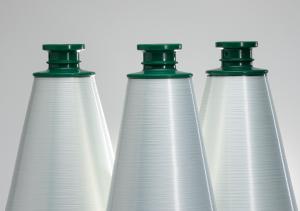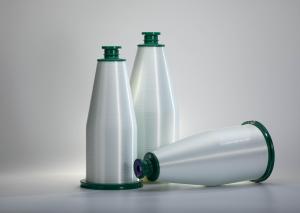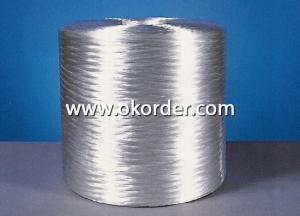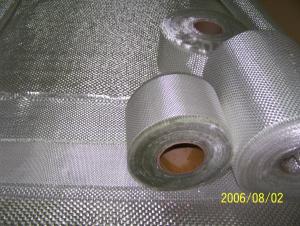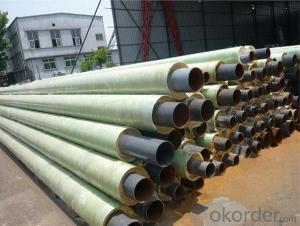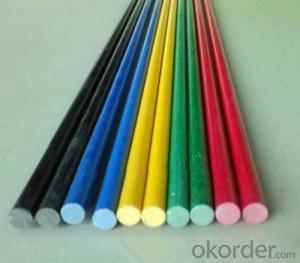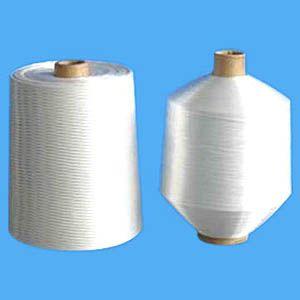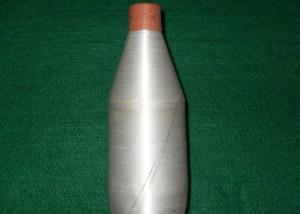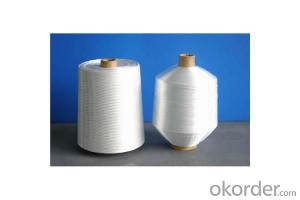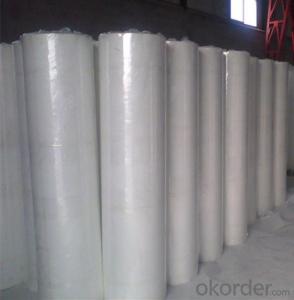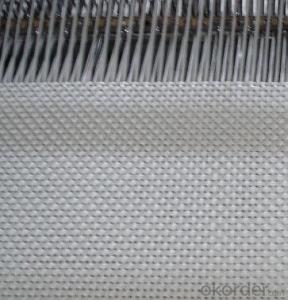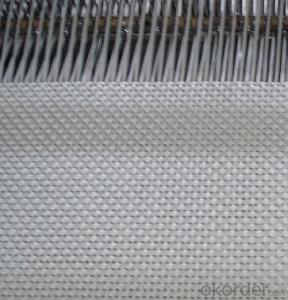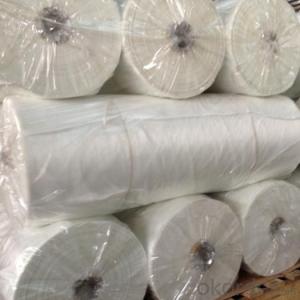Continuous Glass Fiber Yarns Single Fiber Daimeter of 9 Microns and Below
- Loading Port:
- Shanghai
- Payment Terms:
- TT or LC
- Min Order Qty:
- 1000 kg
- Supply Capability:
- 1000000 kg/month
OKorder Service Pledge
OKorder Financial Service
You Might Also Like
Product Description:
Yarn products mainly refer to continuous glass fiber yarns with a single fiber diameter of 9 microns and below.
According to the use, it can be divided into electronic grade fine yarn and industrial grade fine yarn, and according to the type of sizing, it can be divided into starch type and enhanced type.
The diameter of continuous glass fiber yarn is mainly 5-9 microns, the surface of the yarn is coated with a special sizing, which has a good protection effect on glass fiber bunching, less hairiness during deweaving, excellent textile performance, the sizing is easy to desize after the yarn is finished weaving, the decomposition temperature is low, the final ash residual is low, and the fabric is white and flat after desizing. Electronic grade yarn is the basic material used to produce electrically insulating glass fiber series products, and is an indispensable and irreplaceable high-quality structural material for copper clad laminates and printed circuit boards.
Product Features:
-High strength
-Less hairiness
-Good compatibility with resins such as epoxy and unsaturated polyester.
Packing:
with cartons
Storage:
In the absence of special requirements, it should be stored in a dry and ventilated room to prevent moisture. It is recommended to maintain the indoor temperature balance, and the optimal storage temperature is 15 °C ~ 35 °C. This product is best used within 12 months and should be kept in its original packaging before use. To ensure safety and avoid damage to the product, the stacking height of the pallet should not exceed two layers; When stacked two stories high, it is required to move the pallet on it correctly and smoothly.
- Q:Is fiberglass yarn resistant to fungus?
- Fiberglass yarn indeed shows resistance against fungus. The reason behind this lies in its composition of inorganic elements, specifically glass fibers, which do not foster a favorable environment for fungal growth. Furthermore, fiberglass yarn is often coated with a unique resin or finish that bolsters its resistance against fungus and other types of biological deterioration. As a result, fiberglass yarn finds extensive use in various applications where protection against fungus is crucial, including outdoor fabrics, insulation materials, and composite structures.
- Q:Can fiberglass yarn be used in marine applications?
- Fiberglass yarn is indeed applicable in marine settings. Its exceptional strength and durability earn it recognition as an appropriate material for diverse marine uses. Boat hulls, decks, and other structural elements are commonly fabricated using fiberglass yarn. This material exhibits resistance to saltwater corrosion and possesses a remarkable tensile strength, making it well-suited for enduring the demanding conditions of the marine environment. Moreover, the lightweight nature of fiberglass yarn proves advantageous in marine applications by reducing overall structure weight and enhancing fuel efficiency. In conclusion, fiberglass yarn stands as a dependable and flexible material for marine purposes.
- Q:Is fiberglass yarn resistant to rot?
- Indeed, rot is not a concern when it comes to fiberglass yarn. Comprising glass fibers and resin, fiberglass possesses exceptional durability and resistance to moisture, rot, and decay. As a result, fiberglass yarn proves to be an exceptional option for situations that involve exposure to moisture or harsh environmental conditions. Furthermore, the impermeable quality of fiberglass yarn prevents the proliferation of mold, mildew, and bacteria, thereby further bolstering its resistance to rot.
- Q:Can fiberglass yarn be used in construction materials?
- Yes, fiberglass yarn can be used in construction materials. Fiberglass yarn is made from thin fibers of glass that are spun together to form a strong and durable material. It is commonly used in the construction industry for reinforcing and strengthening various materials such as concrete, plaster, and asphalt. When added to these materials, fiberglass yarn helps to increase their tensile strength, improve their resistance to cracking and shrinkage, and enhance their overall durability. It is often used in the production of fiberglass-reinforced concrete (GRC) panels, which are commonly used in architectural elements such as facades, cladding, and decorative structures. Additionally, fiberglass yarn can also be used in the production of insulation materials, roofing materials, and reinforcement fabrics for various construction applications. Overall, fiberglass yarn is a versatile and reliable material that offers numerous benefits in the construction industry.
- Q:Can fiberglass yarn be used in electrical cables?
- Yes, fiberglass yarn can be used in electrical cables. Fiberglass yarn is known for its high strength, durability, and resistance to heat and fire. These properties make it suitable for use in electrical cables where it can provide insulation and reinforcement. Fiberglass yarn is often used as a component in the manufacturing of high-temperature cables, such as those used in aerospace, automotive, and industrial applications, where the cables are exposed to extreme temperatures and need to maintain their integrity. Additionally, the non-conductive nature of fiberglass yarn ensures that it does not interfere with the electrical conductivity of the cables. Overall, fiberglass yarn can be a reliable and efficient choice for incorporating into electrical cables.
- Q:Can fiberglass yarn be used for high-performance applications?
- Fiberglass yarn possesses exceptional qualities, including strength, durability, and resistance to heat and chemicals, which render it suitable for a wide array of demanding applications requiring high-performance. Notably, the aerospace and automotive industries frequently employ fiberglass yarn to craft robust yet lightweight components. Likewise, the construction sector relies on it to reinforce concrete structures and manufacture high-pressure hoses, electrical insulation, and diverse filter types. Furthermore, fiberglass yarn assumes a pivotal role in producing sports equipment like tennis rackets, hockey sticks, and surfboards, ensuring superior performance and long-lasting durability. In conclusion, fiberglass yarn stands as a versatile material capable of effectively serving various high-performance applications.
- Q:How does the stiffness of fiberglass yarn affect its performance?
- The stiffness of fiberglass yarn directly affects its performance as it determines the flexibility and strength of the final product. A stiffer yarn will result in a more rigid and less flexible material, which may be beneficial for applications requiring high strength and stability. However, it could also lead to reduced flexibility and a decreased ability to conform to complex shapes. On the other hand, a less stiff yarn would offer increased flexibility, making it more suitable for applications requiring bendability and conformability. Ultimately, the choice of stiffness depends on the specific requirements of the intended use of fiberglass yarn.
- Q:What are the common weaves or patterns for fiberglass yarn?
- Fiberglass yarn can be woven in various patterns, each with its own unique characteristics and advantages. Here are some frequently used weaves: 1. Plain weave: This is the most basic and commonly used weave. It involves weaving the yarns in a simple crisscross pattern, providing stability, strength, and a uniform appearance. 2. Twill weave: Twill weave creates a diagonal pattern by interlacing the yarns. It offers greater flexibility and drapability, as well as improved strength and durability. 3. Satin weave: Satin weave has a smooth and shiny surface. It involves long floats and provides excellent drapeability and a soft texture. However, it is not as strong as plain or twill weaves. 4. Leno weave: Leno weave is a unique pattern where the warp yarns are twisted around each weft yarn. This creates a mesh-like structure that offers stability and reduces yarn slippage. It is commonly used in applications requiring open structures. 5. Basket weave: Basket weave involves weaving multiple warp and weft yarns together, resulting in a crisscross pattern resembling a basket. It offers stability, strength, breathability, and easy resin impregnation. It is often used in composite panels, automotive parts, and sports equipment. These are just a few examples of the common weaves for fiberglass yarn. The choice of weave depends on specific application requirements, such as strength, flexibility, aesthetics, and breathability.
- Q:Is fiberglass yarn resistant to weathering or UV degradation?
- Yes, fiberglass yarn is highly resistant to weathering and UV degradation. Its inherent properties make it extremely durable and capable of withstanding prolonged exposure to sunlight and harsh weather conditions without undergoing significant degradation or damage.
- Q:Is fiberglass yarn suitable for high-speed weaving processes?
- Indeed, fiberglass yarn is perfectly compatible with high-speed weaving procedures. Renowned for its robustness, longevity, and ability to withstand heat, fiberglass yarn is unquestionably the optimal selection for high-speed weaving. The remarkable strength of fiberglass yarn enables it to endure the rapid motions of high-speed weaving machines without succumbing to breakage or unraveling. Furthermore, its heat resistance guarantees that it can endure the elevated temperatures generated by the weaving procedure without succumbing to melting or distorting. Consequently, fiberglass yarn emerges as an exceptional preference for industries necessitating expeditious and efficient weaving processes, such as textile manufacturing, automotive, aerospace, and construction.
1. Manufacturer Overview |
|
|---|---|
| Location | |
| Year Established | |
| Annual Output Value | |
| Main Markets | |
| Company Certifications | |
2. Manufacturer Certificates |
|
|---|---|
| a) Certification Name | |
| Range | |
| Reference | |
| Validity Period | |
3. Manufacturer Capability |
|
|---|---|
| a)Trade Capacity | |
| Nearest Port | |
| Export Percentage | |
| No.of Employees in Trade Department | |
| Language Spoken: | |
| b)Factory Information | |
| Factory Size: | |
| No. of Production Lines | |
| Contract Manufacturing | |
| Product Price Range | |
Send your message to us
Continuous Glass Fiber Yarns Single Fiber Daimeter of 9 Microns and Below
- Loading Port:
- Shanghai
- Payment Terms:
- TT or LC
- Min Order Qty:
- 1000 kg
- Supply Capability:
- 1000000 kg/month
OKorder Service Pledge
OKorder Financial Service
Similar products
New products
Hot products

